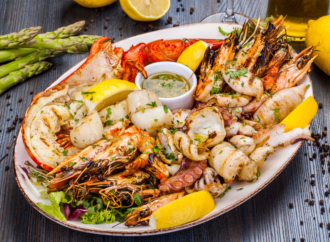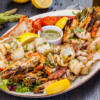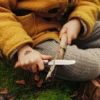Embarking on an outdoor adventure, be it camping, hiking, or bush craft, requires not only courage and enthusiasm but also the right gear. Among the most essential items in your outdoor arsenal are knives and tools. Here we will discuss the process of selecting the right knives and tools for your outdoor activities, ensuring both
Embarking on an outdoor adventure, be it camping, hiking, or bush craft, requires not only courage and enthusiasm but also the right gear. Among the most essential items in your outdoor arsenal are knives and tools. Here we will discuss the process of selecting the right knives and tools for your outdoor activities, ensuring both safety and practicality.
Understanding Your Needs
The first step in selecting outdoor knives and tools is understanding your specific needs. Are you going on a day hike, a camping trip, or a survival expedition? Different activities require different tools. For instance, a simple pocket knife might suffice for a day hike, whereas a multi-tool or a fixed-blade knife would be more appropriate for camping or bush craft.
Types of Knives and Their Uses
- Pocket Knives: Compact and versatile, pocket knives are ideal for everyday tasks like cutting rope, preparing food, or whittling. They are easy to carry, making them perfect for casual outdoor activities.
- Fixed-Blade Knives: These knives are robust and reliable, suitable for more demanding tasks such as wood chopping, game processing, or building shelter. Their sturdy build makes them a go-to for survivalists and campers.
- Multi-Tools: Multi-tools are the Swiss Army knives of the outdoor world. Equipped with various functionalities like screwdrivers, scissors, and can openers, they are indispensable for those who need a variety of tools in a compact form.
Material and Quality
The material and build quality of your knives and tools are crucial. Stainless steel and carbon steel are common choices for knife blades. Stainless steel is resistant to rust and requires less maintenance, while carbon steel holds a sharper edge for longer but needs more care to prevent rust. CRKT knives often feature high-quality materials that balance durability with maintenance needs.
For handles, materials range from wood and plastic to composites and metal. The choice depends on personal preference, weight considerations, and environmental conditions. Ergonomics also play a vital role in ensuring a comfortable and safe grip.
Size and Weight Considerations
When selecting knives and tools for outdoor use, size and weight are significant considerations, especially for backpackers and hikers. Lightweight and compact tools are preferable for long treks to reduce fatigue. However, for tasks requiring heavy-duty use, such as chopping wood, a larger, sturdier knife might be necessary.
Safety Features
Safety should never be compromised. Look for knives with locking mechanisms to prevent the blade from closing accidentally. For tools, ensure that they have secure grips and are designed to minimize injury risks. Always check for any safety certifications or standards they might meet.
Brand and Price
While brand name can be a marker of quality, it’s not always necessary to opt for the most expensive option. Many reliable and high-quality knives and tools come at a reasonable price. Researching and reading reviews can help you find the best value for your money.
Maintenance and Care
Proper maintenance is key to extending the life of your knives and tools. Regular cleaning, sharpening, and oiling (for certain materials) are essential. Ensure that you understand the maintenance requirements of the tools you select.
Legal Considerations
It’s crucial to be aware of the laws regarding carrying and using knives and tools in the areas you plan to visit. Knife laws can vary significantly from one region to another, so always do your research beforehand.
Environmental Considerations
As an outdoor enthusiast, it’s essential to respect nature. Choose tools that are durable and won’t easily break, leaving behind harmful waste. Also, consider the impact of your activities and ensure that your use of knives and tools does not harm the environment.
Testing Before Purchase
If possible, test the knives and tools before purchasing. This can give you a feel for their weight, balance, grip, and functionality, ensuring that you make an informed decision.
Conclusion:
Selecting the right knives and tools for your outdoor adventures is a balance of understanding your needs, considering practical aspects such as material, size, and safety, and being aware of legal and environmental responsibilities. With the right equipment, you can ensure a safer, more enjoyable, and more efficient experience in the great outdoors. Remember, the best tool is the one that suits your specific needs while respecting the environment and local laws. Happy adventuring!


















